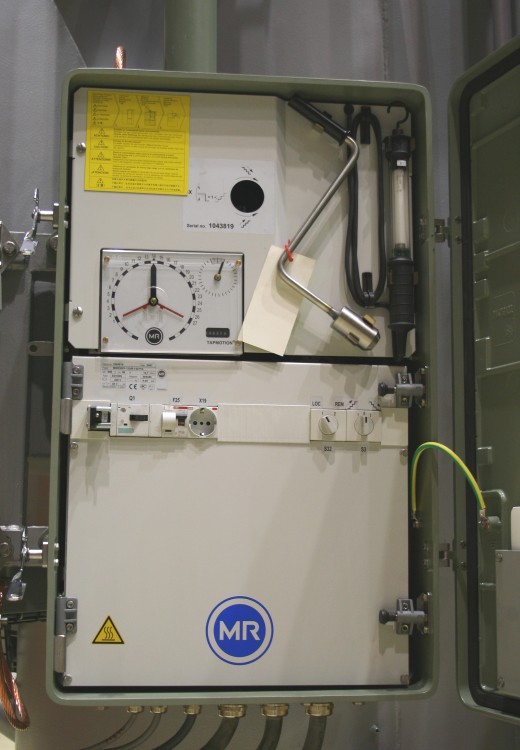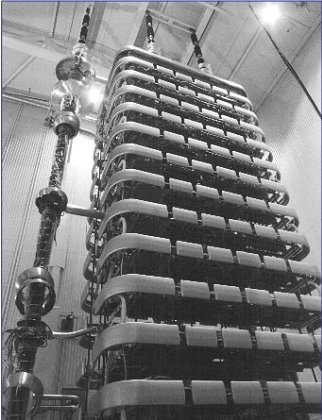|
Voltage Regulation
In electrical engineering, particularly power engineering, voltage regulation is a measure of change in the voltage magnitude between the sending and receiving end of a component, such as a transmission or distribution line. Voltage regulation describes the ability of a system to provide near constant voltage over a wide range of load conditions. The term may refer to a passive property that results in more or less voltage drop under various load conditions, or to the active intervention with devices for the specific purpose of adjusting voltage. Electrical power systems In electrical power systems, voltage regulation is a dimensionless quantity defined at the receiving end of a transmission line as: :\text VR = \frac \times 100 where ''Vnl'' is voltage at no load and ''Vfl'' is voltage at full load. The percent voltage regulation of an ideal transmission line, as defined by a transmission line with zero resistance and reactance, would equal zero due to ''Vnl'' equaling ''Vfl'' a ... [...More Info...] [...Related Items...] OR: [Wikipedia] [Google] [Baidu] |
Ancillary Service
Ancillary services are the services necessary to support the transmission of electric power from generators to consumers given the obligations of control areas and transmission utilities within those control areas to maintain reliable operations of the interconnected transmission system. Ancillary services are specialty services and functions provided by actors within the electric grid that facilitate and support the continuous flow of electricity, so that the demand for electrical energy is met in real time. The term ancillary services is used to refer to a variety of operations beyond generation and transmission that are required to maintain grid stability and security. These services generally include active power control or frequency control and reactive power control or voltage control, on various timescales. Traditionally, ancillary services have been provided by large production units such as generators. With the integration of more intermittent generation and the development ... [...More Info...] [...Related Items...] OR: [Wikipedia] [Google] [Baidu] |
Tap Changer
A tap changer is a mechanism in transformers which allows for variable turn ratios to be selected in distinct steps. This is done by connecting to a number of access points known as taps along either the primary or secondary winding. Tap changers exist in two primary types, no-load tap changers (NLTC), which must be de-energized before the turn ratio is adjusted, and on-load tap changers (OLTC), which may adjust their turn ratio during operation. The tap selection on any tap changer may be made via an automatic system, as is often the case for OLTC, or a manual tap changer, which is more common for NLTC. Automatic tap changers can be placed on a lower or higher voltage winding, but for high-power generation and transmission applications, automatic tap changers are often placed on the higher voltage (lower current) transformer winding for easy access and to minimize the current load during operation. Tap changing No-load tap changer No-load tap changer (NLTC), also known as Off-c ... [...More Info...] [...Related Items...] OR: [Wikipedia] [Google] [Baidu] |
Distribution Management System
A distribution management system (DMS) is a collection of applications designed to monitor and control the electric power distribution networks efficiently and reliably. It acts as a decision support system to assist the control room and field operating personnel with the monitoring and control of the electric distribution system. Improving the reliability and quality of service in terms of reducing outages, minimizing outage time, maintaining acceptable frequency and voltage levels are the key deliverables of a DMS. In recent years, utilization of electrical energy increased exponentially and customer requirement and quality definitions of power were changed enormously. As electric energy became an essential part of daily life, its optimal usage and reliability became important. Real-time network view and dynamic decisions have become instrumental for optimizing resources and managing demands, leading to the need for distribution management systems in large-scale electrical net ... [...More Info...] [...Related Items...] OR: [Wikipedia] [Google] [Baidu] |
Power Electronics
Power electronics is the application of electronics to the control and conversion of electric power. The first high-power electronic devices were made using mercury-arc valves. In modern systems, the conversion is performed with semiconductor switching devices such as diodes, thyristors, and power transistors such as the power MOSFET and IGBT. In contrast to electronic systems concerned with the transmission and processing of signals and data, substantial amounts of electrical energy are processed in power electronics. An AC/DC converter (rectifier) is the most typical power electronics device found in many consumer electronic devices, e.g. television sets, personal computers, battery chargers, etc. The power range is typically from tens of watts to several hundred watts. In industry, a common application is the Adjustable-speed drive, variable speed drive (VSD) that is used to control an induction motor. The power range of VSDs starts from a few hundred watts and ends at tens ... [...More Info...] [...Related Items...] OR: [Wikipedia] [Google] [Baidu] |


